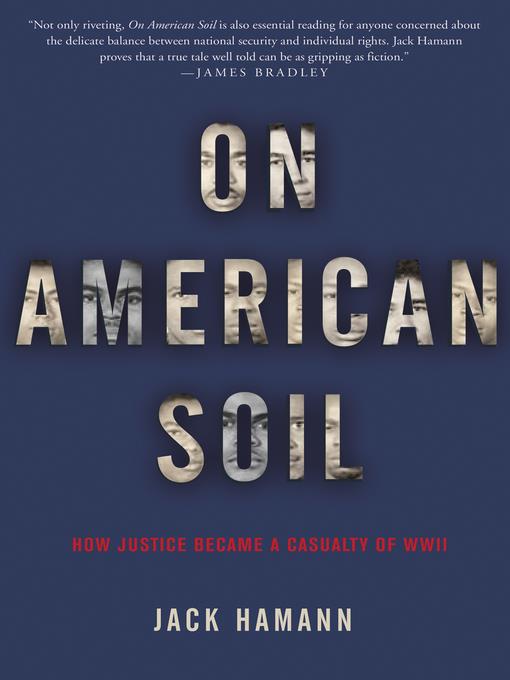
On American Soil
How Justice Became a Casualty of World War II
کتاب های مرتبط
- اطلاعات
- نقد و بررسی
- دیدگاه کاربران
نقد و بررسی

February 7, 2005
An explosive but forgotten WWII incident that took place on native ground is unearthed by former NewsHour
Seattle bureau chief Hamann. In August 1944, the Seattle area played host to Italian POWs on parole and to African-American GIs recently returned from overseas or waiting to ship out. The Italians had freedom of movement and received hospitality in Seattle homes; the African-Americans were subject to massive discrimination and restrictions. The resulting tension led to escalating scuffles, which in turn led to a riotous assault by the GIs on the Italians' quarters and to the death of one Italian. Forty-three GIs faced court-martial; three faced hanging. Hamann shows a then-unknown Leon Jaworski, nearly 30 years before Watergate, using his prosecutorial skills to the fullest, leaning on prejudices in order to make a case for murder. The lead defense attorney, Maj. William Beeks, cleared one third of the defendants (against whom Jaworski had marshalled only "hearsay and innuendo"); the rest were court-martialed, some with imprisonment—but no one was hanged. Hamann reconstructs the courtroom scenes admirably and gives shape to the riot itself. He is best in depicting the men involved and the waste of lives that the episode entailed. Agent, Michelle Tessler at Carlisle & Company
.

March 15, 2005
Broadcast journalist Hamann revisits a historical event he covered earlier in his career -a riot between black soldiers and Italian POWs during World War II at a Seattle army fort, resulting in a suspicious death. The subsequent courts-martial convicted many of these black soldiers on flimsy or nonexistent evidence. Several years later, Hamann found that given such factors as media censorship during wartime and the availability of now declassified documents, there was a completely different story waiting to be uncovered. Though it can be difficult to follow the dozens of players in the investigation and ensuing courts-martial, Hamann helps by offering razor-sharp characterizations. A battle of wits and wills unfolds dramatically, as shady bystanders, innocent victims, phantom instigators, and bumbling army officers all get their turn under Hamann's microscope. Hamann's lively narrative and incisive commentary raise the standard for investigational writing. Recommended for public and academic libraries. -Elizabeth Morris, Illinois Fire Service Inst., Champaign
Copyright 2005 Library Journal, LLC Used with permission.

February 15, 2005
When TV journalist Hamann was covering the expansion of a sewage-treatment plant at Seattle's Discovery Park some 18 years ago, a ranger told him of an odd headstone at the park, dated August 14, 1944, with an Italian inscription. The offhanded remark would lead Hamann to investigate the unsolved murder of Italian POW Guglielmo Olivotto at the park, which was then an Army base known as Fort Lawton. More than 10,000 military personnel were at the base at any given time during the war, including soldiers leaving for, or returning from, the Pacific; Italian prisoners-of-war captured by Allied troops in northern Africa; and a large contingent of segregated black soldiers who served primarily as porters to load and unload ships in the Pacific theater. The story line that Hamann uncovers is compelling enough. But it is the crime's historical context--wartime racial dynamics, colossal army incompetence, international political implications, and the (humane) treatment of POWs, for example--that makes the book so relevant now.(Reprinted with permission of Booklist, copyright 2005, American Library Association.)

























دیدگاه کاربران